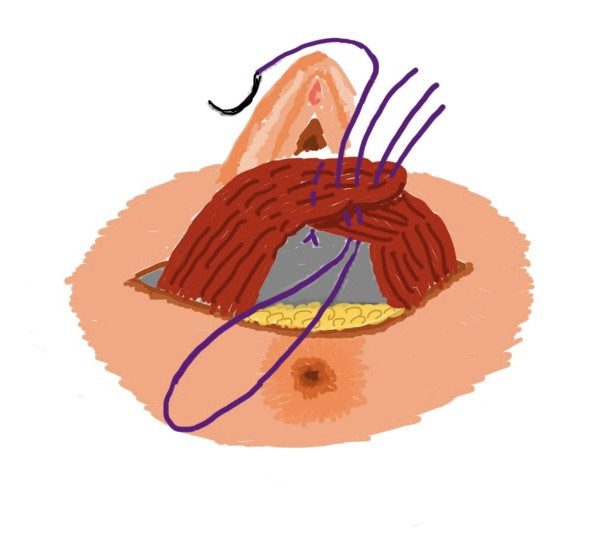Surgeries for Anal Incontinence aim to restore the proper control of the anal opening.
Anal Sphincter Repair, or also called Anal Sphincteroplasty, is a straightforward suture repair (reconstruction) of the anal sphincter muscles in case the diagnostic investigations show a defect, a gap in the circle of the anal muscle. It works for defects in the external anal sphincter. It is a delicate surgery, requiring outstanding surgical understanding of the anal anatomy, but it is not a strenuous surgery for the patient. It can be performed as a day case.
Anal Sphincter Augmentation is mainly performed for passive or mixed incontinence and aims to restore internal anal sphincter function by plumping up the circle of the closure muscle. The plumping is achieved by injecting or implanting biologically inert or friendly materials in the inter-sphincteric space. Lasting results are with Hyexpan self-expandable sponge implants called Sphin-keeper from THD company. While hyaluronic acid fillers give temporary results.
Sacral Nerve Stimulation is yet another entirely different approach to improve anal control. It is by stimulating the autonomic nerves located in the pelvis in front of the sacral bone via an implanted stimulating device similar to a pacemaker. The implantation is a relatively simple procedure. Some centres prefer to place a temporary electrode first, to test individual reaction, before embarking on permanent implantation. To ensure proper functioning of the device there is a need for a dedicated and skilled team background, providing regular follow-ups and 24/7 availability for electrode programming adjustments. Your doctor has been extensively performing this procedure in different centres in the UK and hoping to set it up soon in her UAE practice as well.
What to expect when going for these procedures?
Anal sphincter repair is done under general anaesthesia, which mean before the procedure you need to have a meeting with the anaesthetist. Because of the anaesthesia, a period of 6 hour fasting is required before surgery. Either a full bowel preparation is suggested or at least two enemas (a small bottle of washout of the rectum from below), one the night before the surgery and one in the morning. Your doctor prescribes these for you, and explains you how to give it to yourself at home. Otherwise your day care nurse will give it after you settled in at the day care unit. The surgery can be done as a day case or you can spend one night in the hospital and go home the next morning.
After the surgery you will feel minimal pain, because your doctor will give you a numbing injection, during surgery, to the nerves of the anal area (pudendal nerve block). You will receive a detailed explanation about the medications prescribed, and how to take them: you will be given anti-inflammatory painkillers, antibiotics if necessary. You will be requested to avoid sitting position as much as possible (you should rather lye in any position, kneel or stand) apart from mealtimes in the first 7-10 days after surgery.
Anal Sphincter Augmentation, whether with fillers or with implants is a quick and relatively simple procedure. It can be performed under sedation as well as general anaesthesia. Preparation is the same as for anal sphincter repair. The implantation is guided by endo-anal ultrasound. It is minimally invasive, not very painful, but the first 48 hours after surgery the patient should be extra cautious, avoiding any strain or exertion, to minimise the chances of implant dislodgement. In case of fillers there are no wounds whatsoever. In case of implants there are 6-10 tinee, 2 mm wounds around the anus with a thin absorbable stitch in them, which falls out by itself in 1-2 weeks.
Your doctor will give you a number to contact her in case of emergency as well as arrange a free follow-up visit for you within 2 to 5 days.

